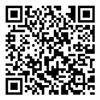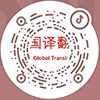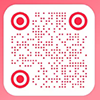Specific Solutions
Translating a Brand Strategy Proposal:
It’s Not Just Language—It’s Brand Thinking in Another Culture
A brand strategy proposal is more than just a planning document. It is the foundation for internal alignment and external communication, capturing a company’s positioning, values, voice, and market insights. It often includes visual identity, tone of voice, slogans, user personas, marketing touchpoints, and multi-platform content strategy.
When such a document needs to be translated—especially for global expansion or cross-border collaboration—the goal is not just to translate words, but to preserve the brand's soul in another language.
I. What Makes Brand Strategy Translation So Complex?
1. Multi-layered Content
A typical brand proposal blends strategic language, data analysis, storytelling, and creative writing. It might include:
Technical terms (e.g., brand architecture, content matrix, user journey)
Creative expressions (e.g., taglines, metaphors, emotional triggers)
Visual alignment (e.g., slide design, visual moodboards)
Logical structure (e.g., insight → idea → execution loop)
A translator must not only understand the text, but also grasp the logic, tone, and cultural intention behind it.
2. Tone and Style Are Not One-Size-Fits-All
Brand language has emotion and identity. The tone used depends on brand maturity, industry, and market:
Emerging brands emphasize attitude, authenticity, and storytelling
B2B brands favor clarity, expertise, and credibility
International brands require concise, globally readable expressions
The translator’s task is not just linguistic—it’s stylistic and strategic.
II. Key Practices in Translating Brand Strategy Materials
1. Brand Understanding Comes First
Before starting the translation, the linguist must understand the brand’s core: positioning, target audience, tone of voice, and messaging pillars. Without this foundation, translation risks being technically correct but strategically hollow.
Great brand translation means writing in the target language as if the brand were born in that culture.
2. Multistage, Multirole Teamwork
High-end brand translation projects often require collaboration among:
Translators – for accuracy and structure
Editors or copywriters – for flow, tone, and idiomatic expression
Cultural consultants or native reviewers – for localization and sensitivity checks
This layered workflow helps ensure the result is both strategically aligned and culturally resonant.
3. Format and Platform Sensitivity
Brand proposals are not always plain text. They often appear as:
Presentations (PPT/Keynote)
Branded PDFs or visual documents
Social media decks or content scripts
Pitch decks for partners, investors, or distributors
This means translators must also handle:
Length limits (e.g., headlines, slide space)
Visual alignment with graphics or image placeholders
Platform tone adaptation (e.g., B2B conference vs. social media launch)
III. What Should a Good Brand Translation Deliver?
Natural and native-sounding expression, not translation “feel”
Strategic intent carried over, not just linguistic equivalence
Cultural fit with the target audience—tone, visuals, and brand values aligned
Adaptability to local platforms, channels, and media environments
Ultimately, the best translated brand proposal feels like it was written locally, while still staying true to the original spirit.
IV. Final Thoughts: Brand Translation Is Strategic Expression Across Cultures
A brand is not a logo or a slogan—it’s a long-term narrative. And language is how that story is told.
Translating a brand strategy document is not just a service—it’s a key part of executing the brand strategy itself in a new market. It requires not just linguistic expertise, but insight, empathy, and a deep understanding of both cultures.
When you choose the right team to translate your brand, you're not just speaking another language—
you're building connection and trust across borders.


















